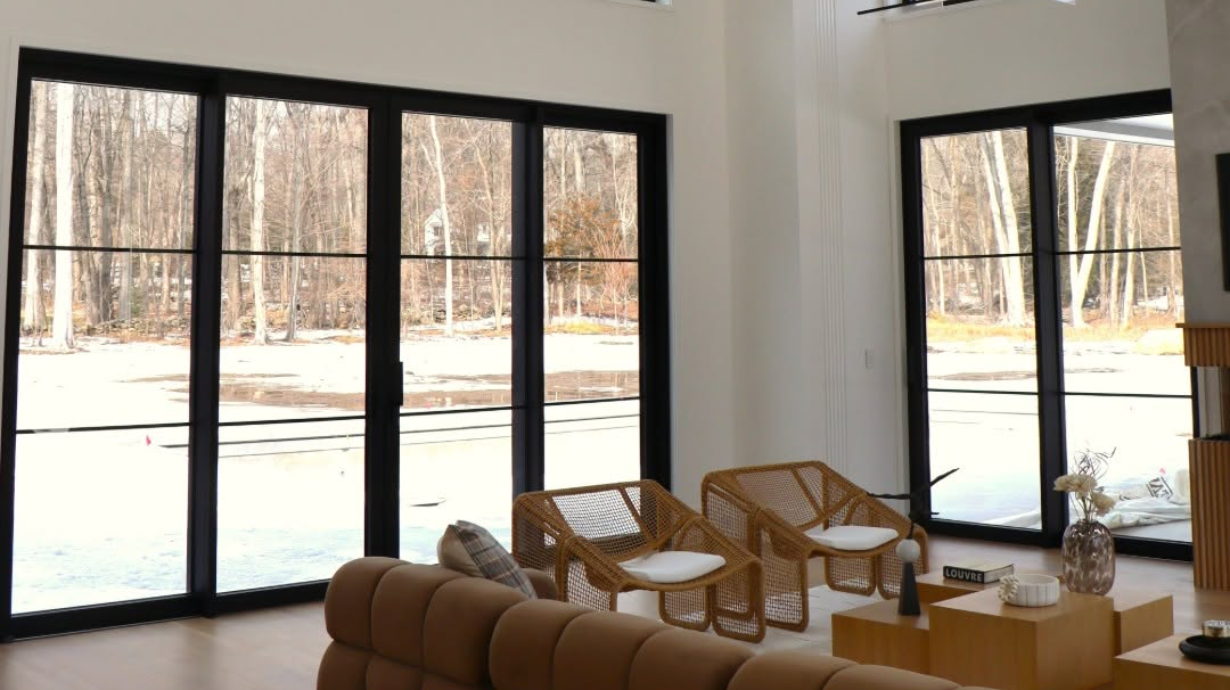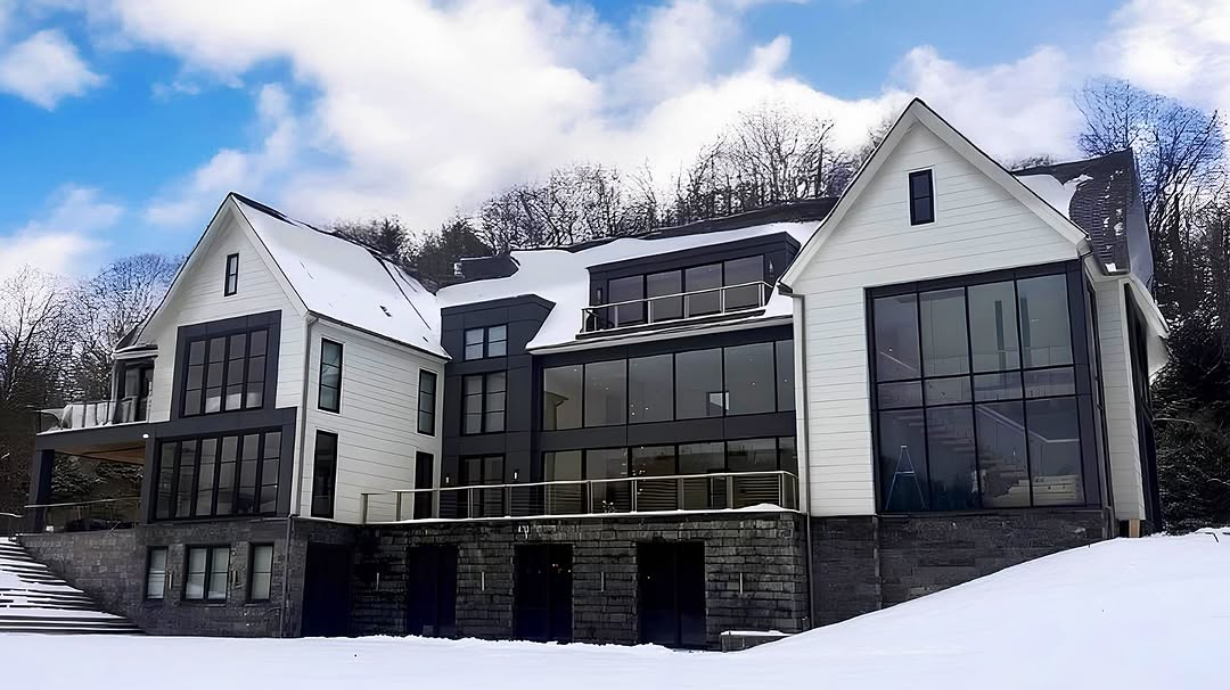Dark, dreary interiors can transform your home from a sanctuary into a source of stress. Whether you’re dealing with overcast skies, seasonal changes, or challenging architectural orientations, the right window solutions can dramatically transform gloomy spaces into glorious, light-filled retreats. Rhea Windows specializes in premium European-inspired window systems that maximize natural light penetration while maintaining superior energy efficiency and weather protection, ensuring your home remains bright and welcoming regardless of external conditions.
The impact of natural light on our daily lives extends far beyond simple illumination. Scientific research consistently demonstrates that adequate natural light exposure improves mood, enhances productivity, regulates sleep patterns, and contributes to overall well-being. Unfortunately, many homes suffer from insufficient natural light due to poor window placement, outdated glazing technologies, or inadequate window sizing. Modern window solutions address these challenges through advanced glazing systems, strategic design principles, and innovative technologies that capture and distribute available light more effectively than ever before.
Understanding Light Challenges in Modern Homes
Many homeowners struggle with insufficient natural light due to various factors including dense urban environments, neighboring structures, or unfavorable building orientations. North-facing rooms typically receive minimal direct sunlight, while heavily shaded areas may feel perpetually dim even during peak daylight hours. Traditional windows often exacerbate these challenges through small glazing areas, thick frames, and outdated glass technologies that block or absorb available light.
Seasonal variations compound these issues, particularly in northern climates where winter months bring reduced daylight hours and frequent overcast conditions. During these challenging periods, homes with inadequate natural light can feel oppressive and contribute to seasonal mood disorders. The solution lies in maximizing available light through strategic window selection and placement, combined with advanced glazing technologies that optimize light transmission while maintaining thermal comfort.
Advanced Glazing Technologies for Maximum Light Transmission
Modern window systems employ sophisticated glazing technologies that dramatically improve light transmission compared to standard glass. Low-iron glass reduces the greenish tint common in regular float glass, allowing up to 91% of visible light to pass through compared to 83% with standard glass. This seemingly small difference creates noticeable improvements in interior brightness and color accuracy.
High-performance uPVC windows like the IDEAL 8000 system incorporate advanced glazing options that maximize light transmission while maintaining exceptional thermal performance. These systems accommodate energy-saving glass units up to 51mm wide, enabling triple-glazing configurations that optimize light penetration without compromising insulation values.
Triple-glazing systems have evolved significantly, with modern configurations maintaining excellent light transmission despite additional glass layers. Specialized coatings and gas fills enhance thermal performance while preserving optical clarity, ensuring maximum natural light reaches interior spaces. The Kömmerling 88 MD system exemplifies this technology, accommodating modern triple-glazed units up to 56mm while achieving thermal coefficients as low as 0.72 W/(m²K).
Slim Profile Solutions for Maximum Glazing Area
Window frame width directly impacts the amount of glazing area available for light transmission. Traditional window frames often feature wide profiles that significantly reduce the glass-to-frame ratio, limiting natural light penetration. Modern aluminum window systems address this challenge through ultra-slim profile designs that maximize glazing area while maintaining structural integrity.
The MB-SLIMLINE system represents the pinnacle of narrow profile technology, offering exceptional thermal insulation with very narrow aluminum profiles. This system enables both visible and invisible profile options from the building exterior, creating the appearance of continuous glazing that maximizes natural light while maintaining architectural aesthetics.
Premium aluminum systems like the COR 70 Industrial RPT achieve remarkable strength-to-weight ratios, enabling large glazing areas with minimal frame interference. These systems support sash dimensions up to 1,500mm wide and 2,600mm high, creating expansive windows that flood interiors with natural light even under challenging conditions.
Large-Scale Opening Solutions for Weather-Independent Brightness
Sliding systems and folding systems create opportunities for massive glazing areas that transform dark spaces into bright, welcoming environments. These systems enable wall-to-wall glazing that captures available light from multiple angles while providing flexibility for natural ventilation when weather permits.
The Cor Vision Plus sliding system delivers exceptional performance for large-scale applications, accommodating panels up to 4,000mm in width or height. With 94% glass surface and visible sections of just 25mm, this system creates nearly uninterrupted glazing that maximizes light capture from dawn to dusk. Manual operation supports weights up to 400kg, while motorized versions handle up to 700kg, enabling massive light-capturing installations.
MB-86 FOLD LINE systems offer ultimate versatility for connecting interior spaces with available natural light. These accordion-style doors create expansive openings up to 9 feet tall, with individual panels supporting up to 220 pounds. When fully opened, these systems essentially eliminate the barrier between interior and exterior spaces, flooding rooms with natural light while providing weather protection when closed.
Strategic Design Approaches for Challenging Orientations
North-facing rooms and heavily shaded areas require specialized approaches to maximize available light. Strategic window placement, including clerestory windows and light wells, can capture indirect light and redirect it into challenging spaces. Reflective surfaces and light-colored interior finishes amplify available natural light, creating brighter environments even with limited direct sunlight exposure.
Facade systems enable continuous glazing across entire building elevations, creating opportunities to capture light from multiple directions throughout the day. The MB-SR50N mullion-transom wall system supports glazing modules up to 1,100kg while maintaining narrow visible dividing lines, enabling floor-to-ceiling glazing that maximizes light capture regardless of orientation.
Corner glazing solutions eliminate visual barriers at building intersections, creating bright, open spaces that feel connected to the outdoors. Advanced aluminum systems accommodate 90-degree corner installations without mullions, enabling continuous glazing around building corners that captures light from multiple orientations simultaneously.
Weather-Resistant Performance for Year-Round Brightness
Superior weather resistance ensures consistent performance regardless of seasonal conditions. Advanced sealing technologies and drainage systems prevent water infiltration while maintaining optical clarity. Premium uPVC door systems like the System 76 AD/MD incorporate multiple sealing levels and specialized gasket designs that maintain performance through extreme weather cycles.
High-performance glazing coatings resist condensation and maintain clarity even during humid conditions. Self-cleaning glass technologies reduce maintenance requirements while ensuring maximum light transmission throughout changing seasons. These advanced glazing options prove particularly valuable in challenging climates where traditional windows may fog or accumulate condensation that blocks natural light.
Smart Integration for Automated Light Optimization
Modern window systems integrate with smart home technologies to optimize natural light throughout changing conditions. Motorized sliding systems respond automatically to weather conditions, adjusting opening positions to maximize light penetration while maintaining thermal comfort. These intelligent systems work in conjunction with interior lighting controls to maintain optimal illumination levels regardless of external conditions.
Automated venetian blinds and shading systems integrate seamlessly with modern window installations, providing precise light control while preserving views and natural illumination. These systems adjust automatically based on sun position and intensity, ensuring consistent interior brightness without glare or overheating.
Energy Efficiency Without Compromise
Advanced thermal technologies ensure that maximizing natural light doesn’t compromise energy efficiency. Multi-chamber profiles, thermal breaks, and high-performance glazing maintain superior insulation values while optimizing light transmission. The Kömmerling 76 MD system achieves thermal coefficients up to 0.76 W/(m²K) while accommodating triple-glazed units up to 48mm thick, demonstrating that energy efficiency and natural light optimization work hand in hand.
Passive solar design principles integrated with modern window technologies create homes that naturally regulate temperature while maximizing available light. South-facing glazing captures solar heat during winter months, while specialized coatings prevent overheating during summer periods, ensuring year-round comfort and brightness.
Professional Design and Installation for Optimal Results
Achieving optimal natural light requires professional assessment and installation. Certified installers understand the complexities of modern window systems, including proper integration with building envelopes and coordination with shading systems. Professional design services ensure window placement and sizing optimize available light while maintaining architectural integrity and energy performance.
Rhea Windows provides comprehensive support from initial consultation through final installation, ensuring every project achieves optimal light penetration and long-term performance. Their expertise in European-inspired window systems enables homeowners to transform even the most challenging spaces into bright, welcoming environments.
Conclusion
Transforming gloomy spaces into glorious, light-filled retreats requires the right combination of advanced window technologies, strategic design approaches, and professional implementation. From ultra-slim aluminum profiles that maximize glazing area to advanced triple-glazing systems that optimize light transmission, modern window solutions provide unprecedented opportunities to brighten any home regardless of weather conditions or architectural challenges.
By partnering with experienced professionals and selecting premium European-inspired systems, homeowners can create spaces that remain bright and welcoming throughout changing seasons and challenging weather conditions. The investment in quality window solutions pays dividends through improved daily comfort, enhanced property value, and the immeasurable benefit of living in naturally bright, uplifting environments year-round.
Frequently Asked Questions
How much can modern windows improve natural light compared to older windows?
Modern high-performance windows can increase natural light transmission by 15-25% through advanced glazing technologies, slim profiles, and larger glazing areas compared to traditional windows.
Do larger windows compromise energy efficiency in harsh weather climates?
No, advanced thermal technologies including multi-chamber profiles, thermal breaks, and high-performance glazing maintain superior insulation while maximizing light transmission, often improving overall energy efficiency.
Can sliding and folding window systems provide adequate weather protection when closed?
Yes, premium sliding and folding systems feature advanced sealing technologies and weather-resistant construction that provide excellent protection against wind, rain, and temperature extremes when closed.



